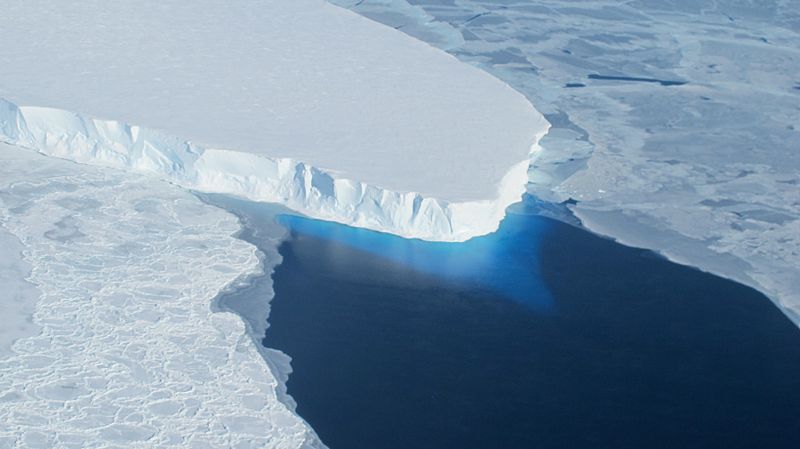 Oregon State University has a researcher on the front line looking into rising seas and lost glaciers.
Oregon State University has a researcher on the front line looking into rising seas and lost glaciers.
Despite being “frozen,” glaciers are active, moving things. They begin on land — ice sliding over bedrock — and reach far into the ocean. A glacier’s “grounding line” is the point where it lifts up from the bedrock and begins to float, forming a shelf of ice. This grounding line retreats inland as warmer currents flow beneath the shelf. If the ice shelf disintegrates sufficiently or the warm water advances far enough inland, the glacier may eventually be freed from the bedrock altogether.
The Thwaites Glacier in West Antarctica is one such glacier, restrained by a shelf of ice that is rapidly disappearing. The Thwaites Glacier already contributes to about 4% of sea-rise globally; every year, the glacier ejects 50 billion tons of ice into the ocean. It also lives in a deep basin, sandwiched between two other glaciers that would quickly shift to take its place, which could lead to the total breakup of the West Antarctic Ice Sheet. Over centuries, this would cause about a ten-foot rise in sea levels.
Dr. Erin Pettit, an OSU glaciologist, told OPB that the Thwaites’ decline is accelerating. Pettit and her team used radar to locate anomalies in the ice: ripples and cracks that are spreading quickly. One crack in particular is six miles long: “it’s just a full-thickness fracture that’s opening up,” Pettit said. This fracture is extremely vulnerable to any minor ocean warming; even a degree or two will cause it to split much faster.
Thwaites is known as a “Doomsday Glacier,” but we will experience the consequences of its melting long before doomsday arrives. Pettit noted that just a centimeter of sea-rise can have substantial environmental impact.
“When we talk about little bits of sea-level rise, every little bit is actually pretty important,” she said.
By Grace Miller
Do you have a story for The Advocate? Email editor@corvallisadvocate.com

